
Barrier Free Living
Learn More
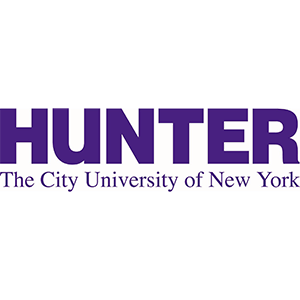
Hunter College, ISLG, and the Manhattan DA’s Office (DANY)
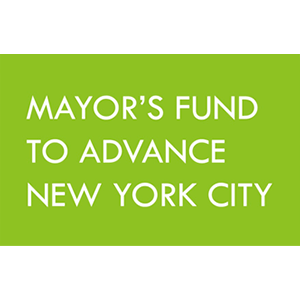
Mayor’s Fund to Advance NYC
- Finalized deliverable (evaluation report) and disseminated results in convening with NYC and partner stakeholders in November 2021.
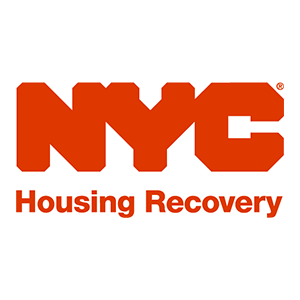
Mayor’s Office of Resiliency (MOR)
- Language from the mailer was adapted and now lives on FloodHelpNY, a website for engaging NYC homeowners about how they can protect their home and finances from flooding.
- A randomized controlled trial showed a 4.6 percentage point increase in survey completion, which means households were 15.5x more likely to complete the survey if they received our “last chance letter.”
- The “last chance letter” was scaled to every household eligible for the affordability study.
- Personalized action steps were delivered to every household eligible for the affordability study.
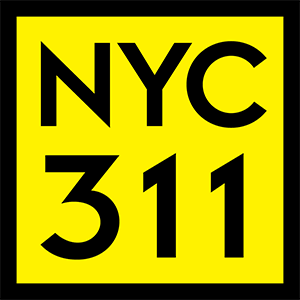
New York City 311
- Pre/Post evaluation showed that changing menu choices and reframing language around feedback decreased misfiled service requests from 59% to 9%.
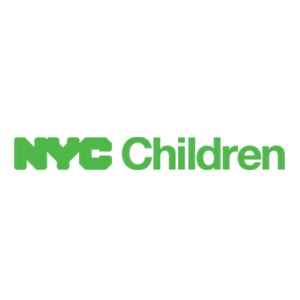
New York City Administration for Children’s Services (ACS)
- The redesigned behavior management system (“STRIVE+”) is currently being implemented in every secure youth detention centers in NYC and staff are being trained in its principles.
Learn More
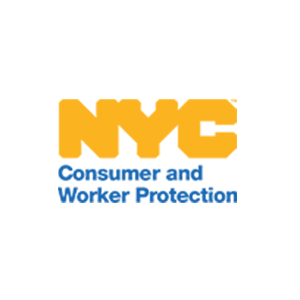
New York City Department of Consumer and Worker Protection (DCWP)
- While a randomized controlled trial was attempted to measure the impact of the redesigned website, the study was underpowered.
- The redesigned website was scaled citywide for future tax years.
- The postcards were translated into eight languages and mailed to families in April 2022.
Learn More
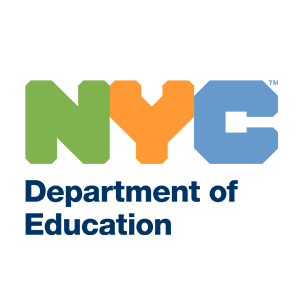
New York City Department of Education (DOE)
- A randomized controlled trial showed that the redesigned email increased testing requests by 5.0% among all districts and 9.0% among low-income school districts.
Learn More
- Engagement among students was high: 81% of participating students responded at least once.
- The revised materials were rolled out in Fall 2021.
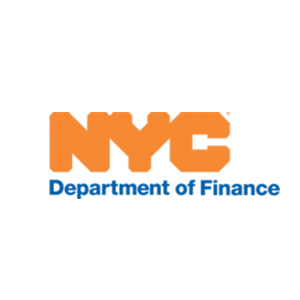
New York City Department of Finance (DOF)
- A randomized controlled trial showed that individuals who received our behaviorally informed letter were 6.7 times more likely to take steps to resolve their summons debt.
- A randomized controlled trial showed that expensive tickets belonging to drivers that received the behaviorally designed envelope 90-days after receiving their ticket were 9.7 percentage points less likely to enter into judgment.
- The DOF scaled the behaviorally designed envelope to all drivers whose unpaid tickets prompt the 90-day notice in August 2018.
- A randomized controlled trial showed the redesigned email reduced boot eligibility by 10.4%.
- The DOF scaled the redesigned email to all drivers approaching the booting threshold.
Learn More
- 60-day notices were scaled citywide.
- A randomized controlled trial found no statistically significant effect, likely due to low power. However, 30-additional businesses registered after receiving the behavioral email compared to the business-as-usual email.
- Mailed inserts were scaled citywide.

New York City Department of Health and Mental Hygiene (DOHMH)
- The behaviorally designed MAF was scaled to all physicians citywide, with improved distribution in 2017-18.
- The self-affirmation notes and decision trees were scaled to all NYC school nurses at the start of the 2017-18 school year.
- The designs were rolled out to the NYC public school system in the spring of 2022.
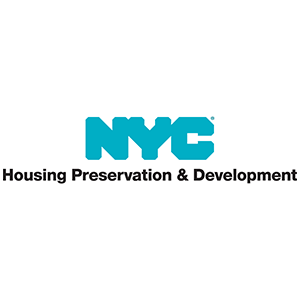
New York City Department of Housing Preservation & Development (HPD)
- Recommendations informed the design of the new NYC Housing Connect online portal, which launched in Summer 2020 and includes a behaviorally-informed income calculation guide and housing suggestions tailored for applicants.
Learn More
Learn More

New York City Department of Small Business Services (SBS)
- The email and cover page were implemented citywide for all eligible businesses.

New York City Economic Development Corporation (NYCEDC)
- Recommendations have been incorporated into materials created for the first cohort of students.
- Following the first cohort, we will work closely with NYCEDC and SBS to design and test further ways to optimize the program design.
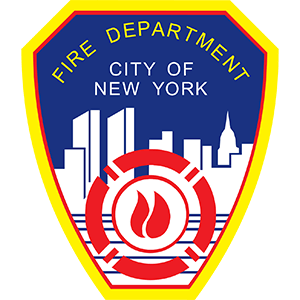
New York City Fire Department (FDNY)
- A randomized controlled trial showed that fee waivers increased registration amongst female candidates by 83% and registration amongst black candidates by 84%.
- Registration amongst male and white candidates also increased, but only by 22% and 38%, respectively.
Learn More
- A randomized controlled trial showed that candidates who received both a text message and an email were 3.6% more likely to appear for the exam than those who received the other forms of outreach.
- The survey closed in November 2018, and final results were presented in April 2019.
- Survey responses demonstrated that Black and female candidates express experiencing threats related to their race and gender, respectively, regardless of whether or not they were hired.
- FDNY, in response, is in the process of leveraging opportunities to reduce perceived threat throughout the hiring process. For example, FDNY’s future communication materials and outreach/programming for candidates are designed to reduce perceived threat.
- A randomized controlled trial showed no statistically significant difference in claimed points for those who received social norms messaging compared to loss aversion messaging.
- A small sample of underrepresented candidates who received a more intensive campaign was 7.4 percentage points more likely to claim residency points, which is statistically significant. This suggests that a more intensive behavioral campaign targeting encourages candidates who are less likely to claim their points.
Learn More
- The reflection exercise and planning card were rolled out to candidates in June 2019, and are now administered as part of the training curriculum for all candidates who attend an information session prior to the start of the CPAT Training Program.
Learn More
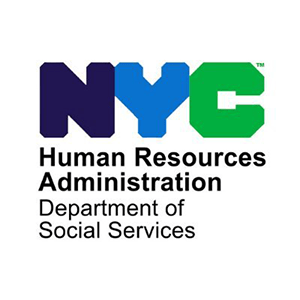
New York City Human Resources Administration (HRA)
The New York City Human Resources Administration (HRA) issues one-time loans to New Yorkers for assistance in paying rental arrears, referred to as “One Shot” loans. New Yorkers who receive the loan are expected to repay it, but the rate of repayment has historically been very low, sitting at just 3% of billed recipients in the first quarter of 2024. The NYC Behavioral Design Team (BDT) partnered with HRA to design a behaviorally informed insert that helps clarify a client's bill and encourage repayment. Through a randomized controlled trial conducted from April to June of 2024, the BDT evaluated the impact of including this insert alongside monthly bills and found that the insert increased repayment of the loans by 60% (from 5% in the control group to 8% in the group that received the insert) and reduced calls from clients with questions about their bill by 32%. Given these highly positive results among the approximately 6,000 clients who received the insert during the evaluation, the HRA plans to scale the insert into its regular One Shots billing practices to approximately 12,000 clients going forward.
SNAP churn (losing benefits, then returning within 90 days) hurts recipients and burdens HRA. To improve SNAP recertification rates, the BDT designed a reminder notice spurring clients to take the first required recertification step: submitting a recertification form. The notice leveraged loss aversion by reframing recertification as a potential loss of benefits and used graphics and numbering to make action steps clear and seem more manageable.
- A randomized controlled trial showed the reminder reduced failure to submit recertification forms by 5.5%
- The reminder notice was scaled to all clients who do not submit their forms by the reminder mailing date.
New York City offers several housing assistance programs to households at risk of becoming homeless. To prompt the uptake of valuable housing assistance, the BDT redesigned a notice sent to at-risk households urging them to call the City’s Neighborhood Homelessness Prevention Outreach (NHPO) program for potential assistance. The redesigned notice used a testimonial to reframe services as an opportunity benefitting others and included a plan-making prompt to help households carve out time in their day to call.
- A randomized controlled trial showed no statistically significant differences in call-in rates or rent assistance between the original and the redesigned notices.
Many SNAP clients fail to complete the required recertification interview and, as a result, lose their benefits. To improve SNAP recertification rates, the BDT redesigned a notice sent to SNAP recertification clients who had submitted their recertification forms but had yet to complete their interviews. The redesigned notice clearly outlined the time commitment and materials needed for the interview and included a planning prompt for calling at a later date and time.
- A randomized controlled trial showed no statistically significant difference in interview completion rates between the original and the redesigned notices.
SNAP churn results from failure to recertify annually but is also driven by a failure to complete the six-month periodic report. The BDT designed two behaviorally informed emails to prompt online periodic report submission. Both emails leveraged loss aversion, outlined action steps and time expectations, and made deadlines salient. One email also used enhanced active choice.
- The enhanced active choice emails increased engagement rates by 30.1%.
New York City is the first city in the country to enact a “universal-access-to-counsel” (UATC) law that provides residents facing eviction in Housing Court with free legal assistance. To raise awareness and increase utilization of these valuable services, the BDT worked with the Human Resources Administration’s Office of Civil Justice to redesign outreach materials, such as flyers, that are sent to New Yorkers facing eviction court proceedings advising them of the resources available and encouraging them to access these services. The behaviorally designed flyer used social norms messaging to highlight other people’s use of the program, outlined the wide range of situations in which people could benefit from having a lawyer or accessing legal guidance, and provided an actionable next step for receiving legal services. These designs more clearly delineated for readers when and how lawyers are useful, more effectively empowering tenants to act if and when they feel at risk.
- A randomized controlled trial showed no statistically significant difference in uptake of legal assistance between the original and the redesigned flyers.
Many Human Resources Administration (HRA) clients visit Job or SNAP Centers in person to complete tasks they could more conveniently complete using ACCESS HRA (AHRA), an app and website that allows New Yorkers to manage their benefits digitally. To increase client uptake of AHRA, the BDT is working with HRA to design a set of interventions to be implemented in Centers. A digital tools area will provide clients with an appealing, low-stakes opportunity for learning about and trying digital tools. This intervention aims to help clients better understand the benefits of AHRA, overcome ambiguity aversion, and establish a habit of using AHRA to manage their benefits. A staff training will increase staff’s understanding of AHRA, and also promote positive staff-client interactions to maximize staff’s ability to engage clients in learning about the digital tools while in the Center.
- The digital tools area and staff training were deferred due to the COVID-19 pandemic.
Due to the COVID-19 pandemic, all Human Resources Administration (HRA) staff supporting the SNAP program were teleworking for the first time. The BDT worked with HRA to increase worker motivation and efficiency and engage workers in an iterative design process to create new worker-facing electronic dashboards. These dashboards were designed to distribute daily tasks across the SNAP processing team and provide staff with more consistent, transparent feedback on their performance. They incorporated behaviorally informed design elements such as motivational framing to emphasize the positive impact of staff’s work on client well-being and improve staff efficiency and accuracy.
- The new system, known as ANGIE, is being piloted in 2021-22.
FairFares NYC offers low-income NYC residents a 50% discount for the subway and bus system, as well as a 50% discount for New Yorkers with disabilities or health conditions who use Access-A-Ride paratransit services. A significant number of Fair Fares enrollees and applicants who attempt to link their Fair Fares NYC account with Access-A-Ride are found ineligible, most frequently because they enter an invalid Access-A-Ride ID. The BDT worked with HRA to identify the behavioral drivers that lead participants to enter an invalid Access-A-Ride ID for the discount. Based on our findings, we designed changes to the online application process that aimed to reduce the number of unmatched applicants, and ultimately ensure prospective applicants are matched to the programs for which they desire to apply their discount.
- A pre-post analysis found that the application changes were associated with a 109% increase in the proportion of link attempts that were successful.
New York City's Department of Social Services (DSS) designed Current NYC, a new Rental Assistance and Landlord Management System, to make it easier for staff to manage clients’ rental assistance applications and rent payments to landlords. The BDT worked with DSS to design a series of three emails to introduce the new system to staff, aiming to build buy-in and help staff know what to expect during the pilot and full rollout of the system.
- Current NYC has been rolled out to all relevant staff and rollout to providers is ongoing through spring 2023. The emails are being sent to staff and providers as they onboard.
HRA's new "One Number" Interactive Voice Response System will merge 35+ legacy customer service phone lines into a single phone line. The BDT partnered with HRA to conduct user testing with representatives of community-based organizations who work directly with HRA clients, and provide input on the design of the new system. The BDT’s activities ensured that the menu design incorporates behavioral design best practices and is responsive to client needs and advocate feedback.

New York City Office of Labor Relations (OLR) + WorkWell NYC
- Behavioral emails doubled click-through and registration rates. The enhanced active choice version of the email increased vaccine uptake at worksite locations by 5%.
- The most successful arm was scaled in 2017-18 and a 10% increase in vaccine uptake was observed year over year.
Learn More
- Email designs were scaled citywide after the piloted email blast enrolled about three times as many people as the first email.
- A pseudo-random assignment was designed, but no comparative data were released by the insurer.
- Design recommendations will be incorporated into citywide newsletters, communications, and upcoming programming.

New York City Taxi and Limousine Commission (TLC)
- A randomized controlled trial showed drivers who received the behaviorally designed mailing were 15% more likely to enroll in the program, but the underpowered study did not find this difference statistically significant.
- The behaviorally designed mailing was scaled to all eligible taxicabs.
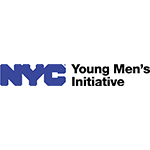
New York City Young Men's Initiative (YMI)
- Findings from the pilot showed positive qualitative impacts on enrollment and designs were rolled out across all three campuses in January 2022.

The Door
- All three designs were adopted by The Door in May of 2022. We are currently awaiting quantitative data to inform our evaluation of the designs.
Learn More



